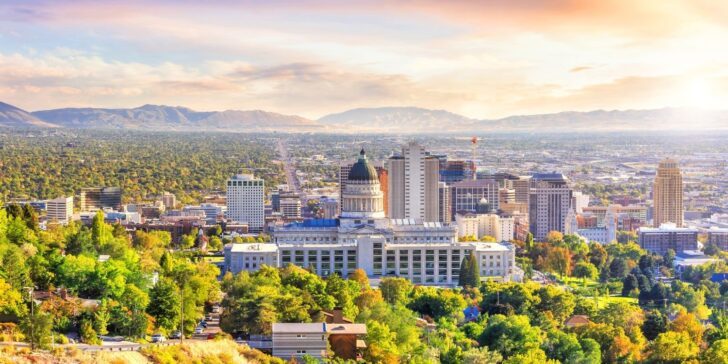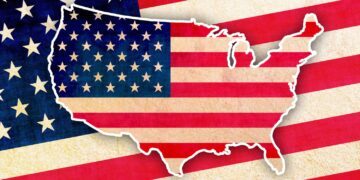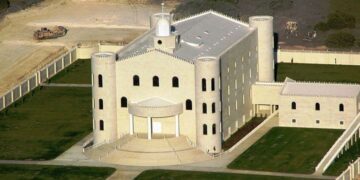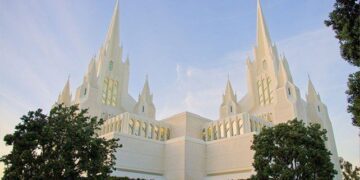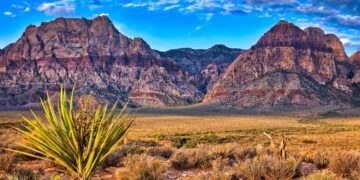Officially nicknamed the “Beehive State” but also known as the “Mormon State” and “Deseret,” Utah was the 45th state to join the United States of America on January 4, 1896.
It has a population of 3,205,958 (as of 2019), making it the 30th most populous state. Utah is bordered by the states of Wyoming, New Mexico, Nevada, Idaho, Colorado, and Arizona.
With a total of 84,899 square miles (219,887 square kilometers) of land and water, it is the 13th largest state.
The capital of Utah is Salt Lake City, which is tucked away in the north of the state.
Ready to learn more about the Beehive State? Let’s dive deeper!
People have lived in Utah for at least 10,000 years!
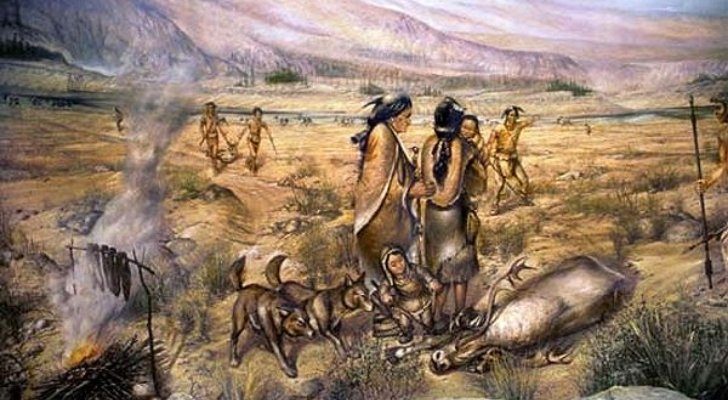

The most commonly held theory on how North America was populated claims that the first people to settle there was a group we call the Paleo-Indians.
As the theory goes, the Paleo-Indians made their way into North America through Alaska from the far east of modern-day Russia at least 13-15,000 years ago.
From there, they crossed into what is now Alaska via the Bering Strait, which was a land bridge at the time due to lower sea levels.
The Paleo-Indians were hunter-gatherers, and as such, they slowly spread throughout the continent in search of better hunting grounds and favorable climates.
As time went by, they began to branch out and settle, or at least stick to some regions of North America.
The earliest evidence of human activity in Utah is dated to around 10-12,000 years ago.
At least five different Native American tribes were living in Utah when Europeans first arrived.
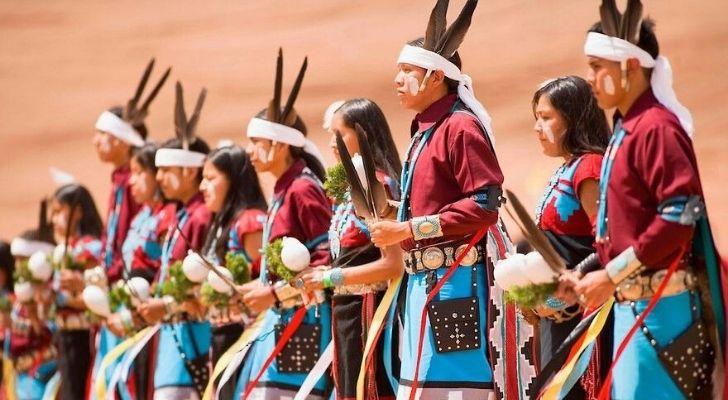

Several different cultures rose and fell, from the first human inhabitation to the arrival of the first European explorers in the region we now call Utah.
The first written records of the region were only made after European contact.
As such, we know little of the earlier tribes besides what we can make out from the archaeological evidence they left behind.
The five tribes of Utah, which still have a presence within the state today, are the Navajo, the Paiute, the Ute, the Goshute, and the Northern Shoshone.
Each of these tribes had developed its unique customs, culture, and methods with which they both lived and thrived in the various climate zones of modern Utah.
The first European explorers to reach Utah were Spanish.
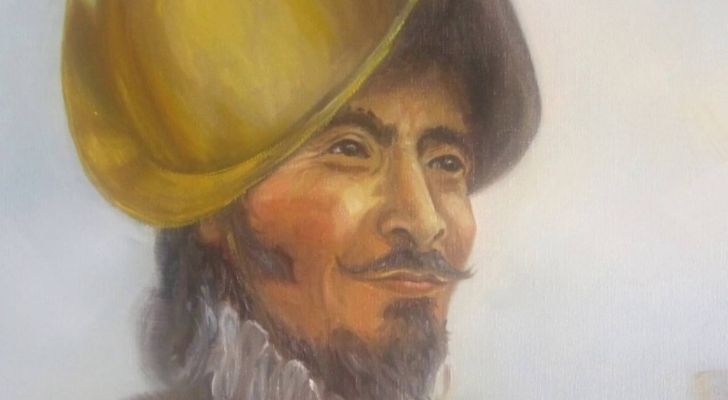

It’s pretty likely that the legendary Spanish explorer and conquistador Francisco Vázquez de Coronado briefly passed through the Utah region in 1540 while searching for Cibola, a fabled city of gold that was believed to be far inland within the continent.
The next point of contact was much later in 1776, when an expedition led by a pair of Franciscan missionaries ventured as far inland as Utah Lake while trying to find a route from modern-day New Mexico through to the California coastline.
While it’s unknown whether Coronado made any significant contact with the local people, the Franciscan priests recorded their journey thoroughly.
They mentioned regular peaceful contact with the Ute people, particularly the Timpanogos tribe around Lake Utah.
The first Europeans to establish colonies in Utah were Mormons.
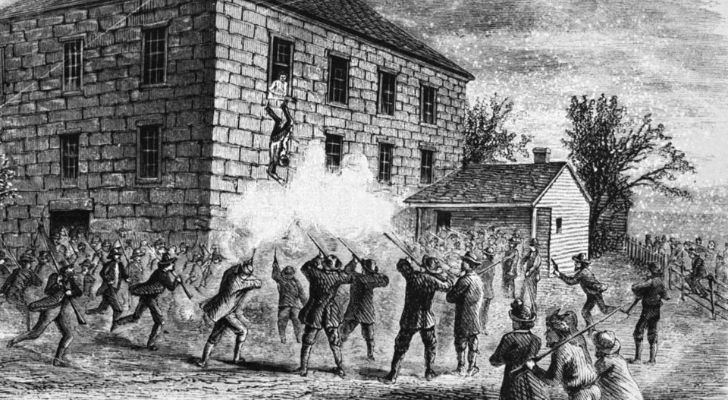

In 1844, the founder and leader of the newly-formed Church of the Latter-Day Saints died.
Shortly after, in 1845, the new Mormon leader relocated his flock to modern-day Utah, which European settlers had otherwise ignored.
The region was attractive to the Mormons as they would be free to practice their religion as they pleased, without any altercations with neighbors who opposed their faith.
They reached Salt Lake Valley in 1847 and decided to settle there, despite it being Mexican territory at the time.
Within the next 20 years, some 70,000 more people came and attempted to find an existence in Utah’s arid climate.
Utah changed many times before it became the state we know today.
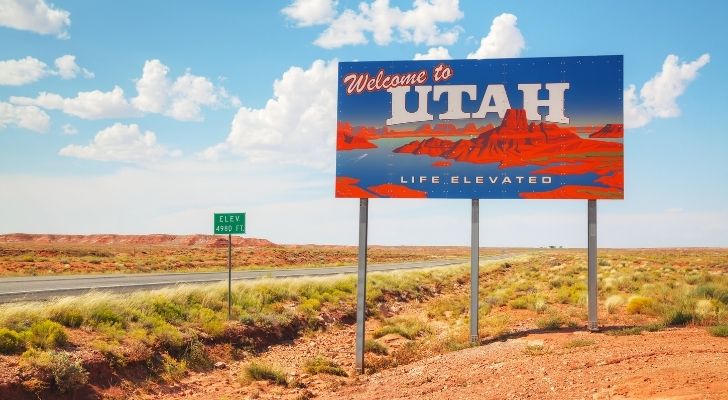

The first Europeans to claim the region now known as Utah were the Spanish, who lumped it in with modern-day California and called it Alta California.
When Mexico gained its independence from Spain, this land also changed hands with Mexico, who, like the Spanish, made little attempts to control or settle the region.
In 1848, the Utah region became US territory along with modern-day Nevada, California, Arizona, and parts of New Mexico and Colorado.
The Church of the Latter-Day Saints decided to try its hand at statehood and proposed that much of this newly claimed land should become the State of Deseret, which the Mormon populace of the region would essentially control.
This was inevitably rejected as the states of California and New Mexico were founded, and instead, much of modern-day Utah and Nevada was established as Utah Territory in 1850.
Utah was granted statehood much later in 1896, only after control of the region was wrested from the hands of the Church of the Latter-Day Saints.
Utah was named after one of the state’s Native American tribes.
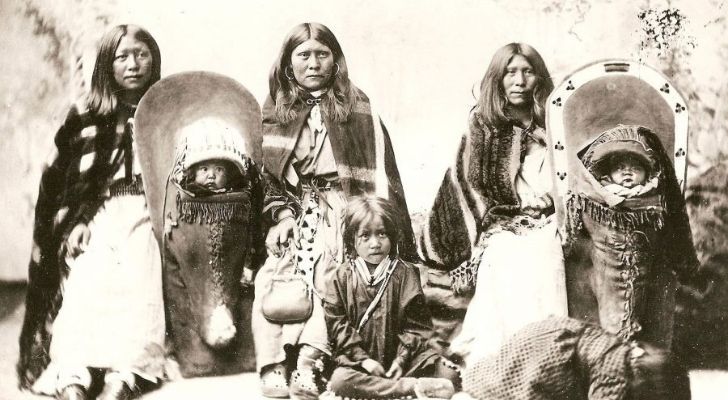

The Ute tribe has lived in the Utah region for nearly a thousand years, at least, and is one of the few tribes still living there today.
When the proposal for the state of Deseret was rejected, it was named Utah Territory after the Utes.
It is said that the word itself means “people of the mountains,” but, likely, this was the name given to the Utes by neighboring tribes.
Utah’s landscape is incredibly diverse.
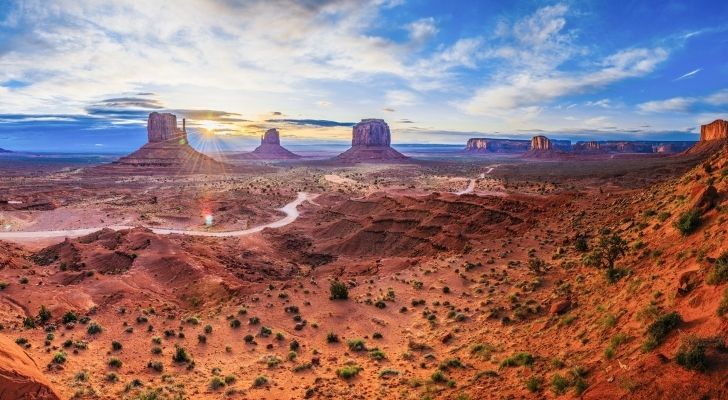

One of the most surprising facts about Utah is how gorgeous it is. For a long time, the state was known to be simply another desert state, but there’s so much more to the state than that!
The impressive Wasatch Mountain Range cuts the northern third of the state in two and boasts some of the finest skiable snow in the world.
Both south and west Utah are arid, but their landscape couldn’t be more different.
Much of the south is riddled with sandstone canyons such as The Narrows in Zion National Park, while Utah’s west comprises dry, rugged flatland and low hills.
The state’s east is largely unsettled as much of it is made up of high-altitude plateaus, which, while beautiful, provide a less desirable climate.
More than half of Utah’s population is Mormon.


Now that we’re on the topic of diversity, let’s look at the people living in Utah today.
As we now know, the state was essentially founded by the Church of the Latter-Day Saints.
The church is ever-present today, although their numbers only make up 55% of the state’s population. Nevertheless, that’s still a very high number, which is why Utah is often called the Mormon State.
Utah isn’t exactly celebrated for its racial diversity, either. This is something that is slowly changing, but there are many towns and even cities in Utah today which are almost entirely white.
In fact, in 1970, 97% of the state’s population was white, which decreased to 86% by 2010.
Much of Utah used to be underwater until relatively recently.
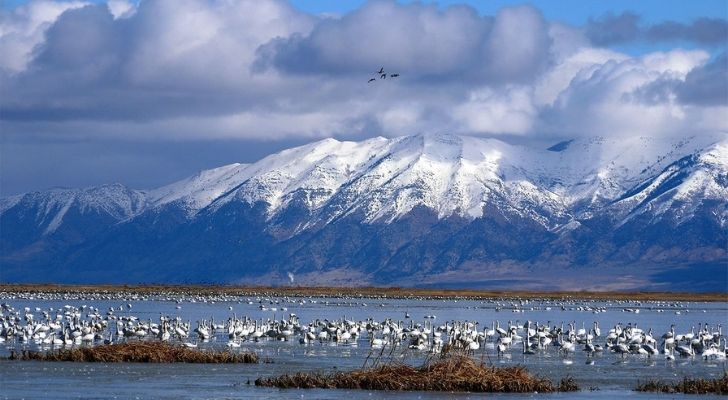

Much of Utah’s northwest lies within the Great Basin of North America. This area unsurprisingly acts like a great basin, with water levels rising and falling over millennia.
Today Utah is covered in many salt lakes, including the Great Salt Lake, remnants of Utah’s underwater past.
The Great Salt Lake is a part of the same lake system as Lake Bonneville, which used to cover much of Utah.
Thirty thousand years ago, Utah looked quite similar to how it does today. Over time, water began to accumulate, and the Great Salt Lake turned into Lake Bonneville, with the lake’s water reaching its highest elevation about 18,000 years ago.
At this point, the lake covered more than 20,000 square miles (51,000 square km) and was about 980 feet (300 m) deep.
Over time the waters receded and returned to the state we know today, which we call The Great Salt Lake.
Utah is home to one of the world’s largest and heaviest living organisms.
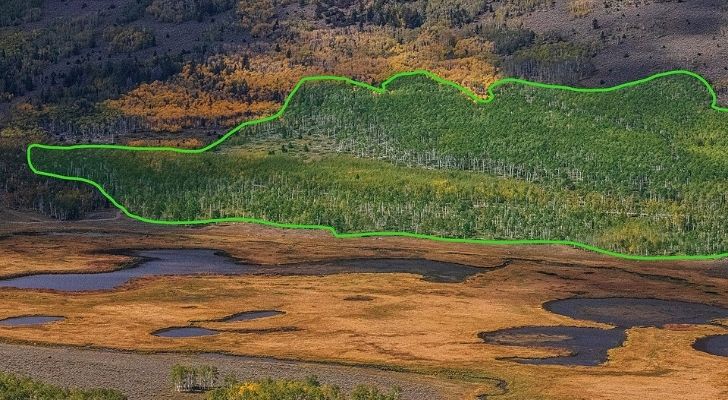

It’s not what you’d possibly imagine, though. Instead, this massive living thing is a single genetically identical colony of quaking aspens that has been steadily growing for at least 80,000 years!
Located in the Fishlake National Park in Utah, this grove of quaking aspens has gained the name Pando, or “The Trembling Giant.”
It is one living organism because the quaking aspen doesn’t reproduce like most other trees; instead, new aspens sprout out of the ground from the grove’s extensive root network.
The Trembling Giant covers an incredibly huge 107 acres (43 hectares) and weighs as much as 6,615 tons (6,001 tonnes)!
Utah is known for its eerie hoodoos and geological formations that defy gravity.


Much of southern Utah’s landscape is made of sandstone, a softer stone that has worn away over time by wind and water.
A more remarkable geological feature of such types of landscapes is the hoodoos.
You may have heard of the word hoodoo being used to describe bewitchment, but it also refers to a particular rock formation that appears more in Utah than anywhere else in the world!
They look a little bit like totem poles, as they’re shafts of sandstone that have been unevenly worn away over time.
If you’re interested in getting a closer look at them, the largest concentrations can be found in Bryce Canyon National Park.
There are more than 2,000 natural sandstone arches in Utah.
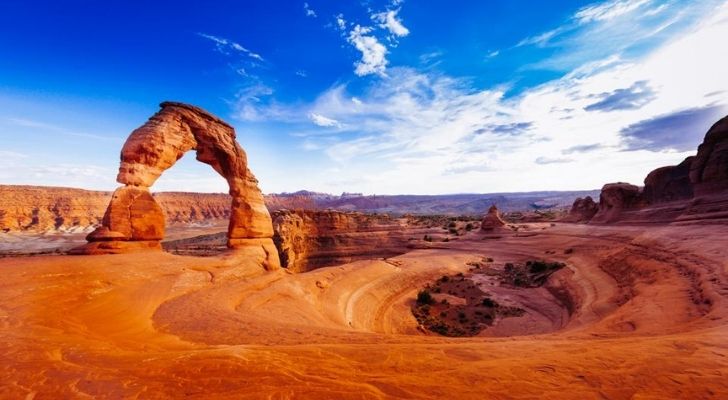

While we’re on the topic of strange natural rock formations, we must talk about the Arches National Park in Utah!
The natural stone arches here were formed similarly to Hoodoos, which are also made of sandstone.
About 300 million years ago, the region was primarily covered in giant salt lakes, which refilled and evaporated over time and left large salt deposits.
Around 150 million years ago, deposits of sand and rock covered this salt, which in turn was worn away to reveal giant sandstone slabs.
The slabs, known as “fins,” then eroded in a peculiar fashion resulting in the gravity-defying sandstone arches!
Utah has its species of raptor!
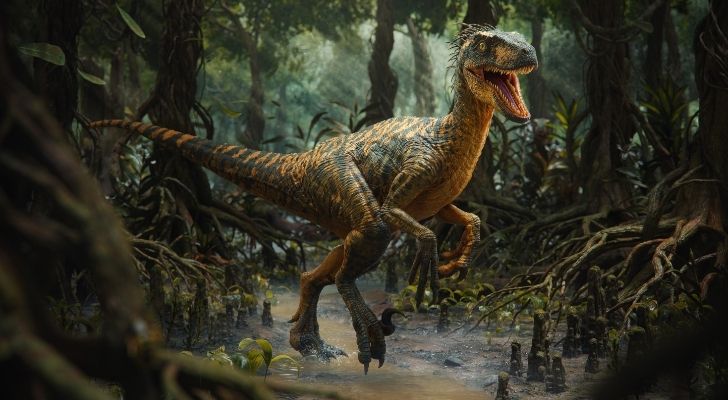

The Utahraptor would have been a sight to behold, and they quickly ran away.
It was the oldest and the largest of all known raptor species, living sometime around 125 million years ago.
The first fossilized bone of the Utahraptor, one of its hooked blade-like claws, was identified in 1991, just before the release of the first Jurassic Park movie.
It’s interesting to note that the so-called Velociraptors in Jurassic Park were closer to the size of the Utahraptor, a coincidence that blew the minds of all involved in the film.
The Utahraptor weighed close to a ton (0.9 tonnes) and measured as long as 20 feet (6.1 meters), making it about twice the size of the more commonly known Velociraptor.
It’s illegal to cause a catastrophe in Utah.
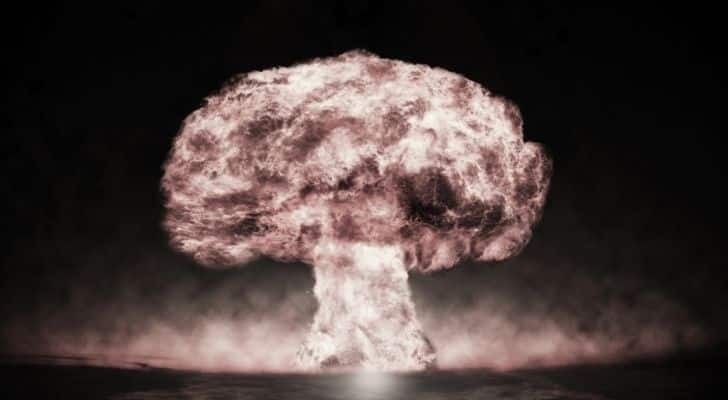

Which, to be honest, sounds like a pretty good law to enforce everywhere!
Criminal code 76-6-105 states that it is a crime to intentionally or knowingly cause widespread damage or injury to people or property in Utah.
Causing a catastrophe can be deemed a misdemeanor, a 1st-degree felony, or a second-degree felony, depending on how much damage was caused or how it was caused.
Using a weapon of mass destruction in Utah? Yep, that’s a 1st-degree felony for sure.
Utah has its own Hollywood.
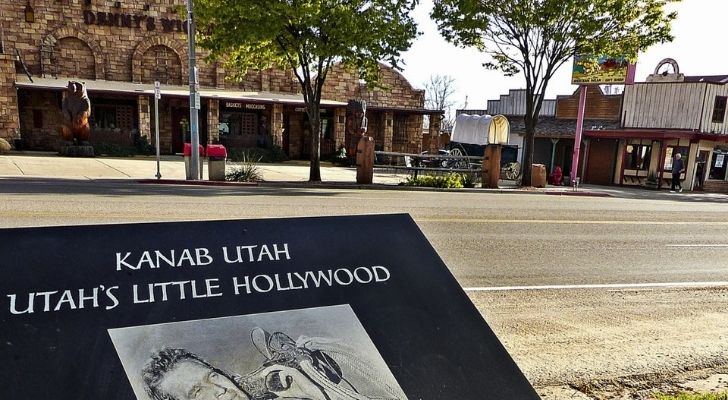

The small town of Kanab was little more than a poor ranching community at the turn of the 20th century.
When Western films rose in popularity, directors began to tire of the exact old locations to shoot in and searched for a unique backdrop that still had a Wild West feel.
The area around Kanab was found to be perfect, and after several hit titles, such as Deadwood Coach, it became known as Little Hollywood.
Even some scenes from the first Planet of the Apes were shot there due to the desolate, otherworldly landscape!
When most people think of Utah, they think of it as a Mormon state.
While this is undoubtedly true, especially with the church’s history in the region, there’s more to Utah than that!
It’s also an incredibly breathtaking state overflowing with natural beauty, making it one of the US’ top adventure sports destinations!

